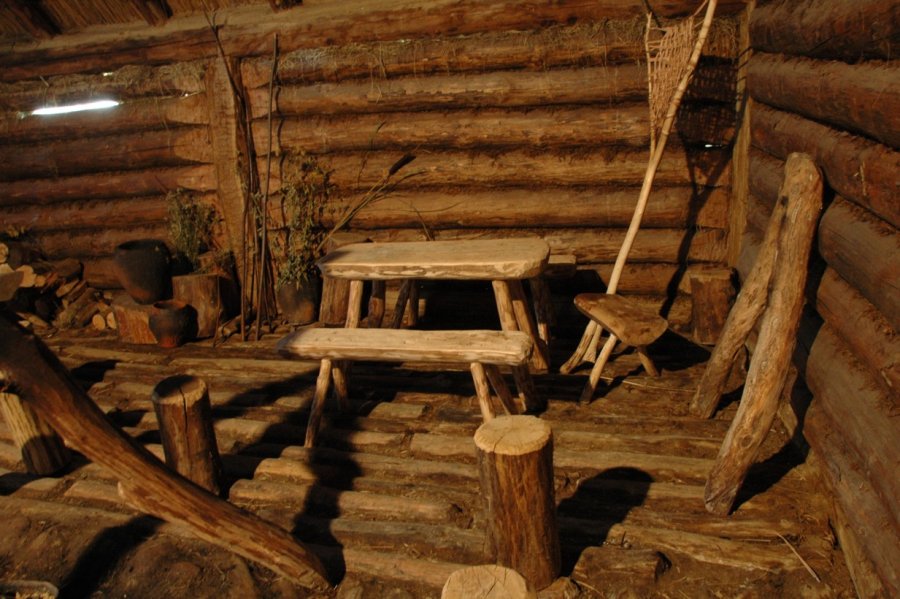Biskupin: A 2,700-Year-Old Defensive Settlement Of Lusatian Settlers In Poland
A. Sutherland - AncientPages.com - Biskupin was a 2700-year-old defensive settlement, located on a peninsula in Lake Biskupin, in north-west Poland. The discovery of Biskupin in 1933 by a schoolteacher, was one of the most important events in 20th-century Polish archaeology.
The site was carefully planned, and obviously required vast quantities of timber to construct it. The buildings did not reveal any evidence of a social hierarchy, which could indicate these people lived in an egalitarian society, without a chief.
The site of Biskupin was inhabited mainly in the Early Iron Age, from about 700-400 BC, and was associated with the activity of the Lusatian settlers in the area.
It was a fortified settlement of a type fairly common within this region of Poland at this time. The site’s timber structures are very well-preserved because they were waterlogged for more than 2,000 years. This process enabled a reconstruction of Biskupin and recovery of more than 5 million different artifacts from the site.
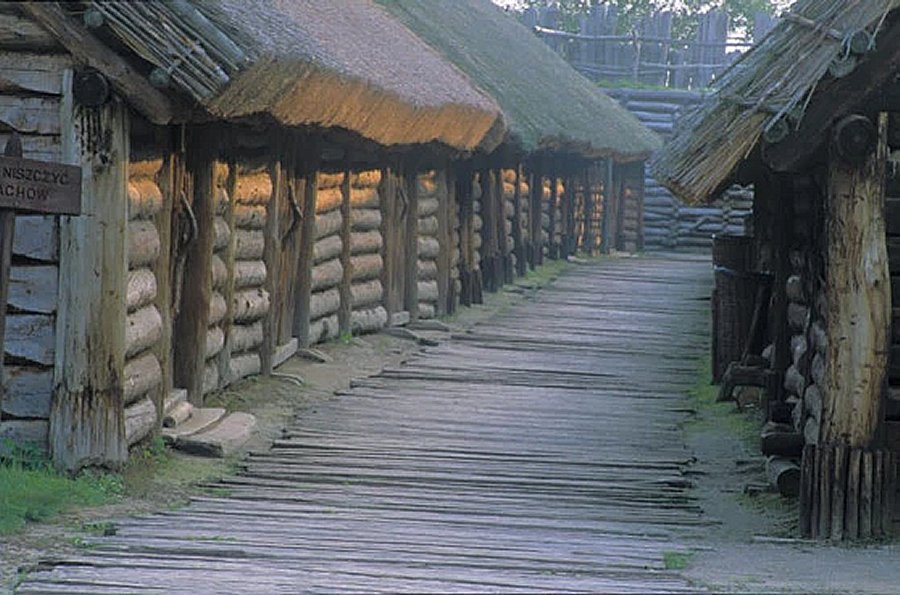
Surrounded by a massive shaft, the settlement had 13 longhouses with more than 100 living quarters, each with a porch and the main room. It is estimated it could inhabit up to 1,000 people.
Excavation began in 1934 and lasted up to the outbreak of World War II. Unfortunately, during the war, many ancient records and on-site made reconstructions were destroyed.
Moreover, the Nazi authorities covered up the excavations of Biskupin, with sand and the woodwork began to dry out and perish. In 1946, the excavation and restoration of Biskupin were resumed.
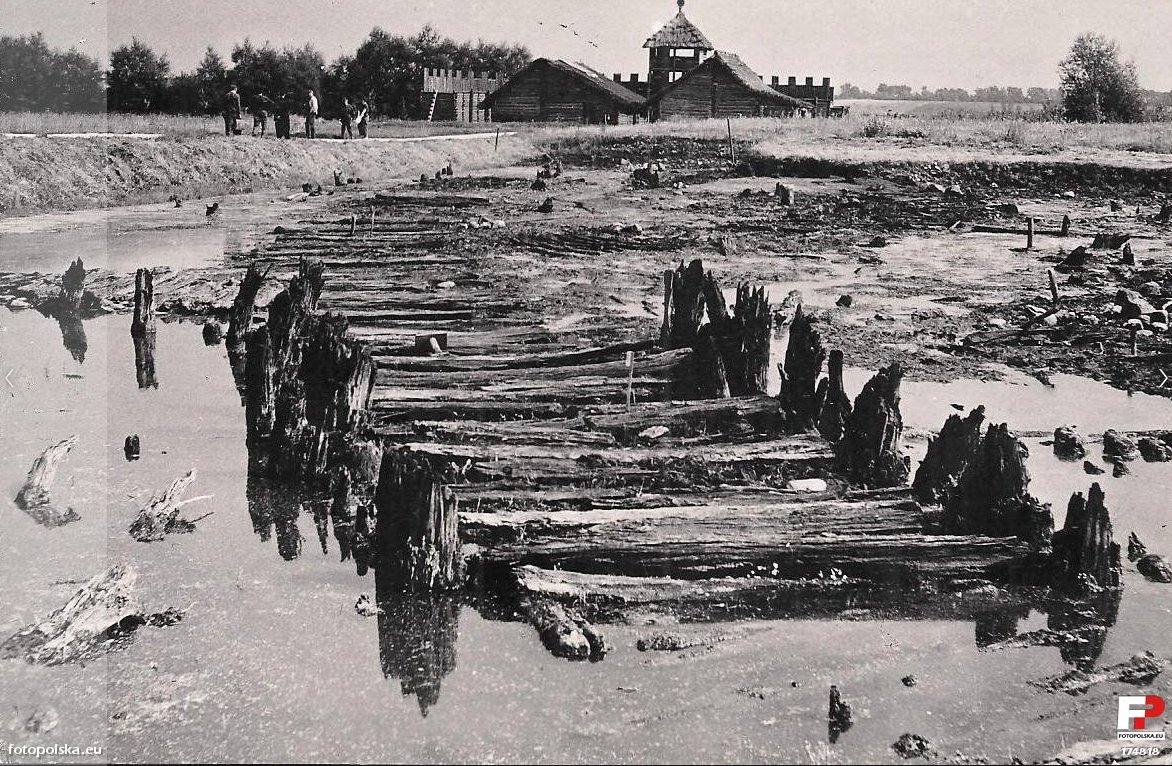
A fragment of a "street" in the Biskupin settlement, in th years between 1960-1968. Credits: kujawsko-pomorskie. fotopolska.eu/
The inhabitants of Biskupin were farmers, animal breeders, and hunters. They skillfully utilized natural resources and had wide trading contacts, but to live in relative safety, they had to build fortifications.
Surrounded by a massive shaft, the settlement had 13 longhouses with more than 100 living quarters, each with a porch and the main room. It is estimated it could inhabit up to 1,000 people. The settlement was abandoned after about 150 years.
Biskupin covered about 2 hectares (5 acres) and was enclosed by a rampart (3m (10ft) wide, 6m (20ft) high and made of sand, clay, and stones. The rampart was further strengthened. The gateway was 8m (26ft) was connected with an oak causeway extending 120 (130yd) to the lakeside.
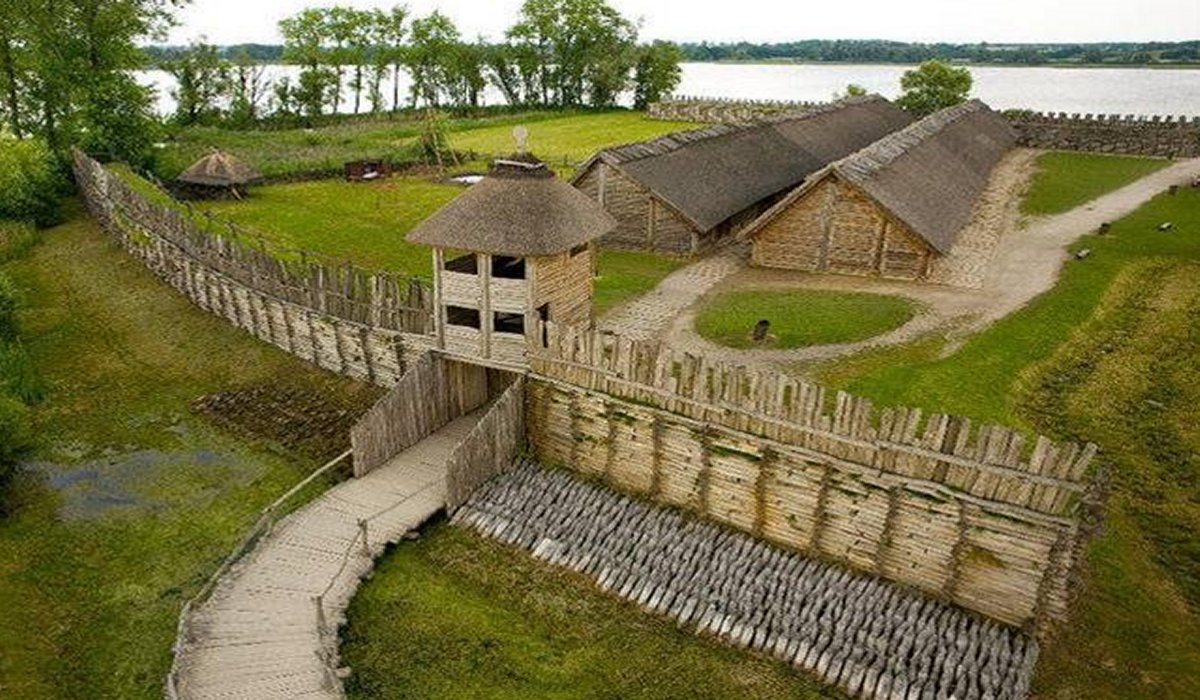
The inhabitants of Biskupin were farmers, animal breeders, and hunters. They skillfully utilized natural resources and had wide trading contacts, but to live in relative safety, they had to build fortifications. Photo: Bogacki/Nauka w Polsce
The settlement was carefully planned, and obviously required vast quantities of timber to construct it. The buildings did not reveal any evidence of a social hierarchy, which could indicate these people lived in an egalitarian society, without a chief.
See also:
Winged Hussars: Facts And History About The Polish Warriors, Their Armor And Military Tactics
The finds revealed evidence of fishing, domesticated animals, hunting and plowing. There were also found remains of bronze and bone working that took place within the settlement.
After about forty years, Biskupin was destroyed by fire, possibly in a Scythian attack; the inhabitants of Biskupin built a smaller settlement inside the ramparts. About 80 years later, in the late 5th century, the settlement was once again destroyed and burned by Scythian invaders. Again, it was time to abandon the place.
However, sporadic occupation on the site still continued but only on a reduced scale, because of continuously rising water levels in the lake due to the climate change at that time.
Written by – A. Sutherland - AncientPages.com Senior Staff Writer
Copyright © AncientPages.com All rights reserved. This material may not be published, broadcast, rewritten or redistributed in whole or part without the express written permission of AncientPages.com
Expand for referencesMore From Ancient Pages
-
 Did An Extraterrestrial Spacecraft Land In Ancient China? Remarkable UFO Accounts From The Past
Featured Stories | Nov 17, 2014
Did An Extraterrestrial Spacecraft Land In Ancient China? Remarkable UFO Accounts From The Past
Featured Stories | Nov 17, 2014 -
 1,200-Year-Old Soap ‘Factory’ Unearthed In Beduin City Of Rahat In Israel
Archaeology | Aug 18, 2020
1,200-Year-Old Soap ‘Factory’ Unearthed In Beduin City Of Rahat In Israel
Archaeology | Aug 18, 2020 -
 On This Day In History: Francis Drake Was Knighted After He Completed A Circumnavigation Of The World – On Apr 4, 1581
News | Apr 4, 2016
On This Day In History: Francis Drake Was Knighted After He Completed A Circumnavigation Of The World – On Apr 4, 1581
News | Apr 4, 2016 -
 Indigenous People Of Ancient Sicily Were Acrive Traders Long Before The Greeks Arrived
Archaeology | Sep 28, 2021
Indigenous People Of Ancient Sicily Were Acrive Traders Long Before The Greeks Arrived
Archaeology | Sep 28, 2021 -
 Veles And Perun: Most Powerful Slavic Gods In Conflict Between Powers Of Light And Darkness
Featured Stories | Jun 26, 2017
Veles And Perun: Most Powerful Slavic Gods In Conflict Between Powers Of Light And Darkness
Featured Stories | Jun 26, 2017 -
 Bill Of Rights 1689 – Enormous Historical Moment In English History
Ancient History Facts | May 6, 2019
Bill Of Rights 1689 – Enormous Historical Moment In English History
Ancient History Facts | May 6, 2019 -
 Ten Inscriptions Related To Sargon Unearthed At Ancient Assyrian Site In Iraq’s Kurdistan Region
Archaeology | Jan 20, 2020
Ten Inscriptions Related To Sargon Unearthed At Ancient Assyrian Site In Iraq’s Kurdistan Region
Archaeology | Jan 20, 2020 -
 Mysterious Books With Dangerous Secret Knowledge Deliberately Hidden From Public View
Featured Stories | Jan 8, 2024
Mysterious Books With Dangerous Secret Knowledge Deliberately Hidden From Public View
Featured Stories | Jan 8, 2024 -
 Teotihuacan’s Puzzling Red Glyphs Could Be Unknown Ancient Writing
Archaeology | Sep 22, 2020
Teotihuacan’s Puzzling Red Glyphs Could Be Unknown Ancient Writing
Archaeology | Sep 22, 2020 -
 Face Of Man From The Lost Medieval Village Of Dzwonowo Reconstructed Using 3D Printing Technology
Archaeology | Jul 20, 2020
Face Of Man From The Lost Medieval Village Of Dzwonowo Reconstructed Using 3D Printing Technology
Archaeology | Jul 20, 2020 -
 Early Māori Settlement On The Subantarctic Islands -Uncovering Some Of The Unknown
Archaeology | Jul 20, 2023
Early Māori Settlement On The Subantarctic Islands -Uncovering Some Of The Unknown
Archaeology | Jul 20, 2023 -
 Mysterious 9,000-Year-Old Shaman Burial In Bad Dürrenberg – One Of Central Europe’s Most Spectacular Archaeological Discoveries
Featured Stories | Sep 15, 2023
Mysterious 9,000-Year-Old Shaman Burial In Bad Dürrenberg – One Of Central Europe’s Most Spectacular Archaeological Discoveries
Featured Stories | Sep 15, 2023 -
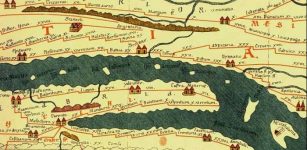 Tabula Peutingeriana: Huge Ancient Roman Map Created By Unknown Cartographer
Artifacts | Dec 14, 2018
Tabula Peutingeriana: Huge Ancient Roman Map Created By Unknown Cartographer
Artifacts | Dec 14, 2018 -
 Extremely Rare And Tiny Biblical Coins Discovered Near The Temple Mount
Archaeology | May 30, 2018
Extremely Rare And Tiny Biblical Coins Discovered Near The Temple Mount
Archaeology | May 30, 2018 -
 The Apaches’ Mysterious Encounter With Unknown Beings
Featured Stories | Jun 10, 2024
The Apaches’ Mysterious Encounter With Unknown Beings
Featured Stories | Jun 10, 2024 -
 Ancient Cave Church Complex In Basarabi, Romania
Civilizations | Dec 11, 2018
Ancient Cave Church Complex In Basarabi, Romania
Civilizations | Dec 11, 2018 -
 Unique Bones Decorated With Black Markings Discovered In 4,500-Year-Old Tomb In Ukraine
Archaeology | Jul 30, 2018
Unique Bones Decorated With Black Markings Discovered In 4,500-Year-Old Tomb In Ukraine
Archaeology | Jul 30, 2018 -
 Ancient DNA Has Traced Large-Scale Migrations Into Bronze Age Britain And The Emergence of The Celtic Language
Archaeology | Dec 30, 2021
Ancient DNA Has Traced Large-Scale Migrations Into Bronze Age Britain And The Emergence of The Celtic Language
Archaeology | Dec 30, 2021 -
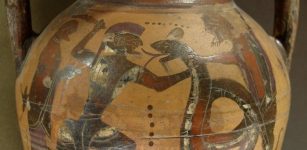 Cadmus – Legendary Phoenician Hero And Founder Of Prosperous City Of Thebes
Featured Stories | Sep 6, 2023
Cadmus – Legendary Phoenician Hero And Founder Of Prosperous City Of Thebes
Featured Stories | Sep 6, 2023 -
 Excavations of the Aşıklı Mound, Cappadocia , Turkey
Civilizations | Aug 22, 2015
Excavations of the Aşıklı Mound, Cappadocia , Turkey
Civilizations | Aug 22, 2015


